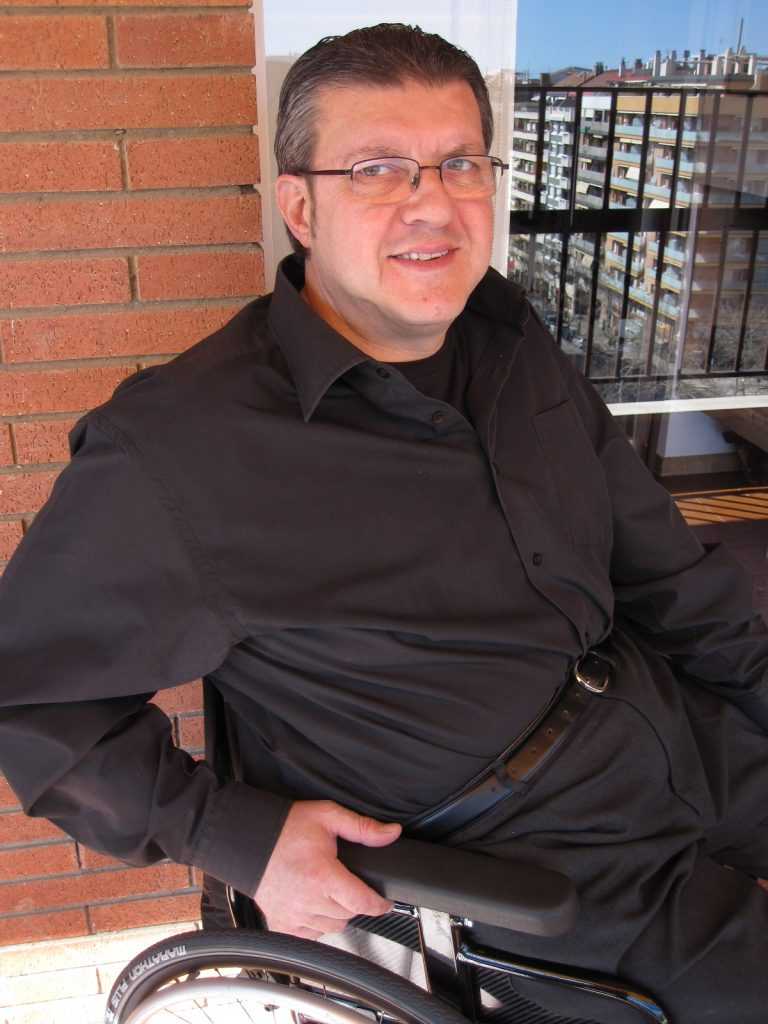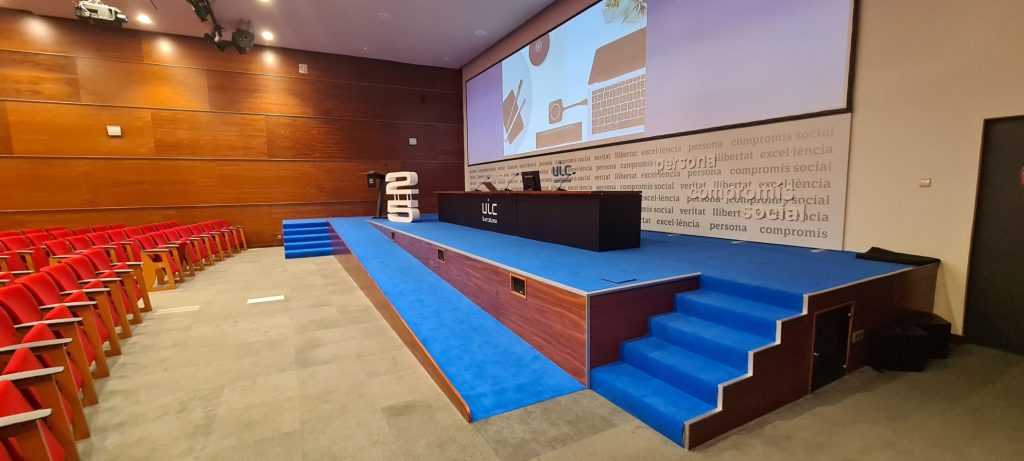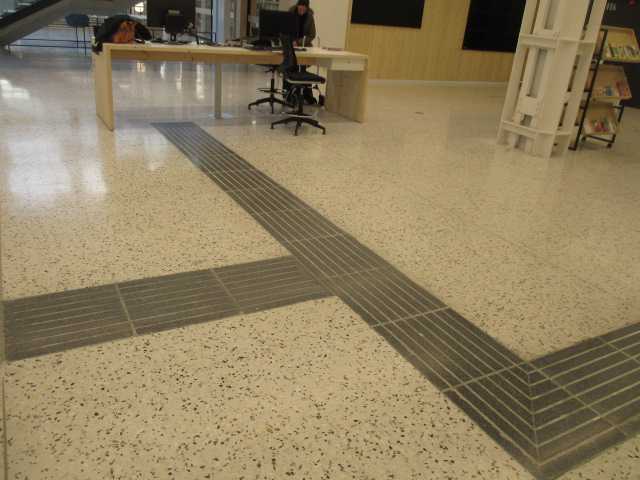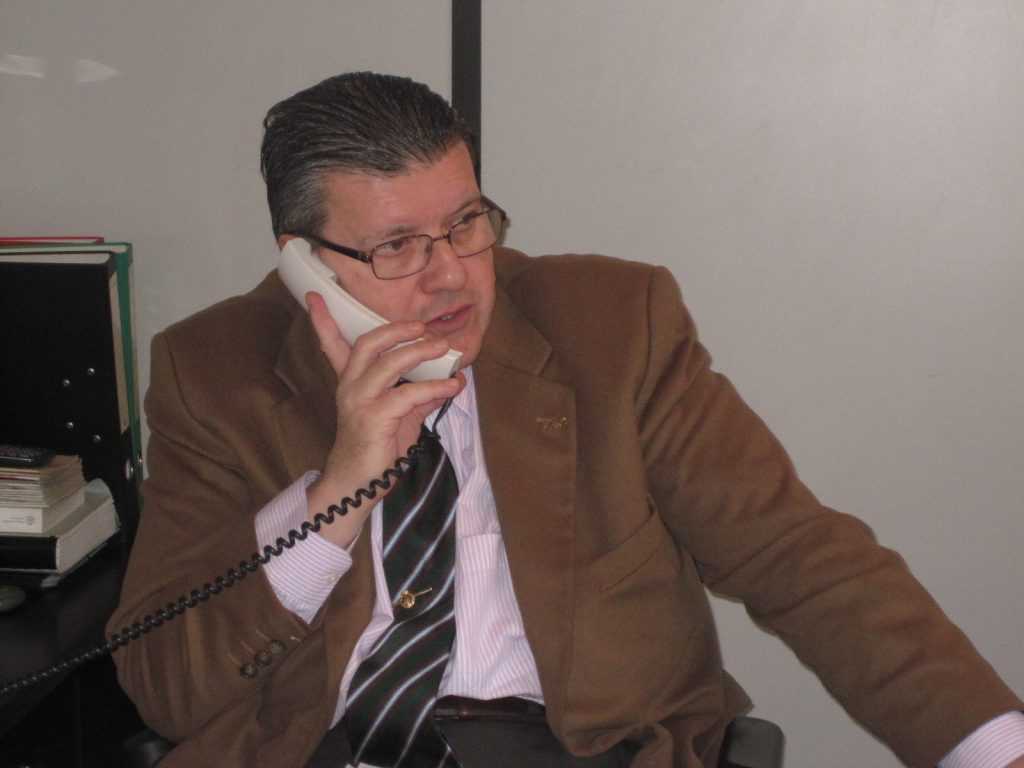Enrique Rovira-Beleta Cuyàs: Advocate for Accessible Design in Spain and Abroad
Enrique Rovira-Beleta is an architect and university professor. He has been a wheelchair user for more than 40 years. He formed his architecture studio in 1994 after completing his architecture studies in 1993. In 2009, he founded Rovira-Beleta Accessibility Consulting. Throughout his career, he has established and improved accessibility laws, regulations, and policies for public and private organizations in Spain and overseas, notably in Latin America. These have included preparing the drafts for accessibility regulations in force in Catalonia, regulations in Spain, and participation in AENOR working groups. AENOR (Asociación Española de Normalización y Certificación-Spanish Association for Standardization and Certification) is a private, non-profit organization dedicated to the development of standardization and certification in industrial and service sectors to improve technology in Spain. His projects have included public and private use buildings, housing, urban planning, transportation, products and services, and their respective information and communication systems.
Since 2005, he has taught the course on accessibility in the three-year program at the School of Architecture at the International University of Catalonia (UIC Barcelona), which has been mandatory since 2009. Since 2010-2011, he has supervised the integration and implementation of accessibility in all final degree projects. He has directed the “Expert Postgraduate in Accessibility,” an interactive online course in Spanish with student enrollment from Spain and other countries.

Spain for Design reached out to Enrique Rovira-Beleta.
Why have you dedicated your professional life to the area of accessibility?
In 1982, at the age of 23, while doing military service, I was infected with an unidentified virus, which affected my spinal cord. Since then, I have been paraplegic and a wheelchair user. I discovered that there were no accessibility rules in the country. Later, as an architecture student, I wanted to know everything I could about the effects of disabilities on people. When I completed my studies in 1988, I dedicated my work to improving the quality of life of all people, especially those with disabilities.
What is your training and experience in accessibility?
In 1985, as an architecture student and wheelchair user, I began to work in the mornings for the General Directorate of Architecture and Housing of the Government of Catalonia. I specialized in regulations for the elimination of architectural barriers in Catalonia. I became familiar with the different associations of people with disabilities: physical, visual and hearing, members of work groups of the Municipal Institute of People with Disabilities of the Barcelona City Council, and also in the service commission. On secondment since 1987, I have worked as an accessibility technician and collaborated with the Catalan Institute of Assistance and Social Services (ICASS) of the Government of Catalonia.
During my architecture studies, I discovered the world of adaptive sports. I participated in wheelchair tennis competitions and was the runner-up of Spain in 1988. I also competed in swimming in various disciplines and was the champion of Spain and Catalonia from 1985 to 1989. This is how I trained not only as an architect, but also as a paraplegic and an athlete.
In 1990, the Organizing Committee for the 1992 Olympic and the Paralympic Games of Barcelona hired me to take responsibility for the removal of architectural barriers. I supervised all projects and worked with the technicians and architects responsible for each sport, competition, training, and the different sports facilities and sub-venues. I also worked on other infrastructure, including improving accessibility in the airport of Barcelona. The intention was to ensure that these endeavours were fixed and permanent, not provisional.
What is your opinion about how the faculties of architecture and design schools integrate this subject into their plans and studies?
Unfortunately, there are very few universities in the world that have mandatory subjects on accessibility and the differing abilities of people with severe motor, sensory, and cognitive impairments. In Europe, there are few faculties of architecture and design schools that integrate compulsory subjects on this topic into their study plans and degree programs. UIC Barcelona is the only one in Spain that does. However, there is a growing need for “accessibility experts,” given society’s aging population and people with disabilities who require accessibility in their environment, public buildings, housing, transportation, and their respective systems for information, communication, and signalling.
I had an interview with a school of architecture in India. They informed me that out of 450 universities, only three have studies on this topic. In Latin America, the university in Santiago de Chile and the public one in Bogota have implemented subjects on accessibility in architecture degree program and have independent online courses. At the Ibero-American Social Security Organization (OISS) in Argentina and Peru, they offer courses on architecture and occupational hazards prevention.
What would you say to those who do not think that accessible design for interiors are aesthetically pleasing?
Think about aging in your home or experiencing an illness that limits mobility, perception, or understanding of things. In such circumstances, you will undertake changes to make your spaces as accessible as possible to meet your abilities and, of course, make accessible design features that are functional, aesthetic, and, if possible, that seamlessly integrate with the design.
For accessible design, we must engage specialist accessibility technicians who have university degrees. Unfortunately, there are very few specialists. For this same reason, I direct the postgraduate accessibility expert program at UIC Barcelona. We have trained more than 200 professionals to help them create projects and designs that integrate accessibility that are seamless and have minimal costs.
What are some buildings in Spain that seamlessly integrate functionality into the design?
Architecture and design must work hand in hand. Usually, due to a lack of training, accessibility is not sufficiently considered for projects. New architecture and design projects must incorporate all senses: sight, hearing, smell, touch. Accessibility consultants must master different regulatory requirements to integrate accessibility into their projects. With a mastery of accessibility, design projects can incorporate the needs of all, whether users’ capabilities are temporary or permanent.
At UIC Barcelona, we improved the accessibility of existing buildings by incorporating “reasonable adjustments” not to modify the original design but to achieve maximum comfort and safety. We installed a magnetic loop in the concierge-reception area, a haptic plane placement at the side to facilitate orientation for visitors to the UIC campuses in Barcelona and Sant Cugat del Vallés, the elevation for the placement of braille and high relief signage on the elevator keypads next to each stop. In the Aula Magna, we designed a ramp that is parallel to the stage as an alternative to the existing stairs to facilitate access for speakers, teachers and students.

In the Montserrat Abelló Library, in the Les Corts neighborhood of Barcelona, which is the work of architects Ricard Mercadé and Aurora Fernández, the Barcelona City Council commissioned us to supervise the accessibility of various features, the furniture, and signage. We devised two new glass elevators, podotactile guide strips of routing on the pavement of the lobby connecting the entrance with the reception for the visually impaired, and accessible stairs to the upper floors. We managed to increase the number of accessible public toilets, collaborated with architects on the design and adaptation of the library furniture for use by visitors with different needs, and incorporated easy-to-use signage with texts and or numbers that have contrasting colors, icons, and information panels located next to the elevators and stairs.

Are the laws regarding accessibility national or regional (by communities)?
In Spain, the application of accessibility regulations began in urban planning, construction and transport in the 1980s through initiatives by different autonomous governments. The state government delegated jurisdiction to apply accessibility regulations to the seventeen Autonomous Communities and two Autonomous Cities (Ceuta and Melilla). They were in force until the state government published the Technical Building Code-CTE in 2010, with various extensions of its content in subsequent years. Although the regulations are similar, the state regulations are more restrictive than the regional regulations in the 17 Autonomous Communities and two Autonomous Cities.
I believe we are the only country in the world with as many accessibility regulations, similar but different, and mandatory regulations according to the territory we work in. The regulatory framework can be complex and challenging. Technicians apply both the accessibility regulations in force in each autonomous territory and also the state accessibility standards.They must apply comply with the most restrictive ones of the two.
Are there organizations, associations and websites that address accessible travel? I have heard about the ONCE Foundation.
Yes. The ONCE Foundation (National Organization of the Blind of Spain), PREDIF (State Representative Platform of People with Physical Disabilities), and CERMI-Spanish Committee of Representatives of People with Disabilities are associations of people with disabilities who provide information and regulate the standards for inclusive tourism for the state and or regional public administrations. Other agencies and organizations related to tourism in Spain are beginning to create accessibility guides for different establishments in their cities or autonomous territories.
My architecture studio and consulting firm has published books, articles, and manuals to facilitate the understanding of regulatory requirements for professionals and students taking university courses on accessibility. Among these publications is “The Guide to Accessible Barcelona” (2006), which received an award from the Government of Catalonia as the best tourist guide .
What initiatives would you like to see?
I would like to see mandatory studies on accessibility across departments with the objective of enhancing safety and comfort in towns and cities. With respect to tourism studies, there must be mandatory subjects on accessibility, with “examples of good practices” that also highlight the advantages of accessible tourism as a business. Students should think about accessibility requirements when they design and carry out any project, activity, product, service, means of transportation, training/communication systems, websites, and applications. This should be standard so that they do not require technical assistance from others.
Unfortunately, accessibility is not yet mandatory for studies and training at public and private educational institutions. We need to fill this gap and hire accessibility experts with suitable accreditation and at least five years of experience to supervise projects, works and the design of different products, services, and activities. The objective is to ensure that buildings, environments, spaces, products, services, goods, and activities meet or exceed regulatory requirements, especially in the tourism sector.
There is a lack of rigorous application of mandatory regulatory requirements for accessibility in Spain and worldwide. What we need in Spain and in all countries committed to inclusive tourism and tourism for seniors and families is a “Quality Seal of Accessibility.” Those who award this distinction must have approved certification or specific university degrees in accessibility. This certification system should be similar to the system for awarding Michelin stars in the field of gastronomy and indicate different levels of accessibility. Specifically, A, AA, AAA, depending on their level/quality in compliance with the requirements for accessibility safety regulations, and they should even indicate actions that exceed the regulations. The certification should include management and maintenance standards to ensure that it is sustainable. Students and professionals must specialize in accessibility through training courses approved by the public administration or universities and not through courses given by private companies as these companies do not have the necessary certification to carry out this type of training.

